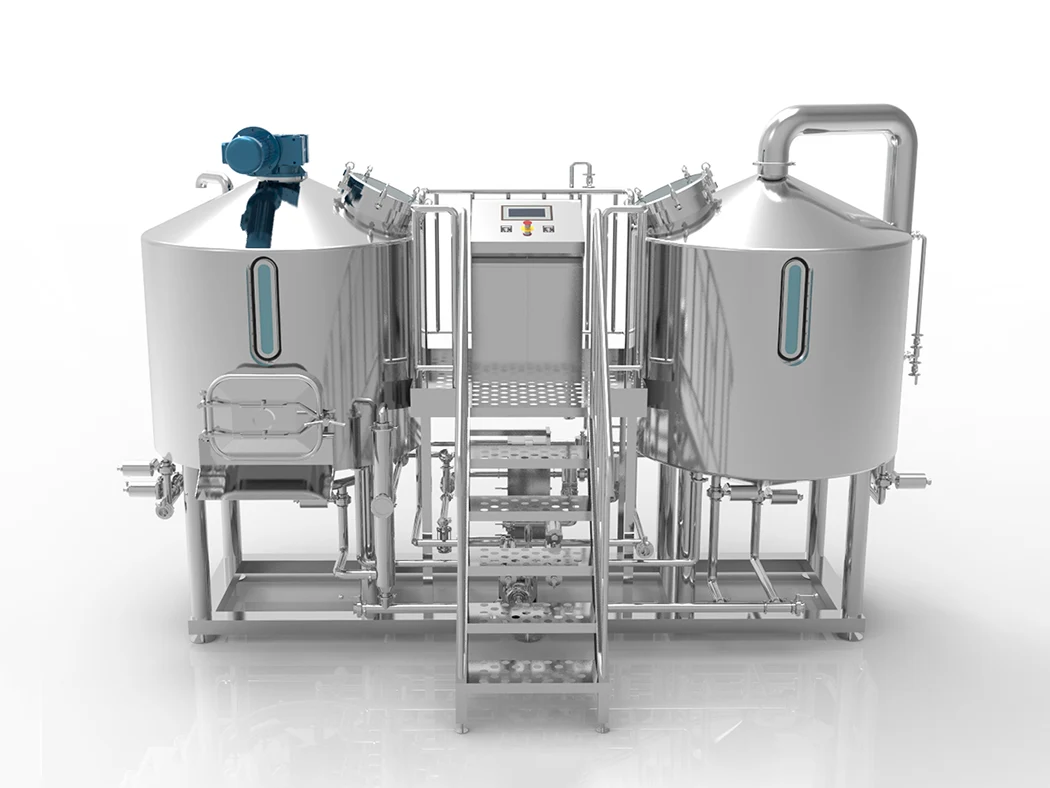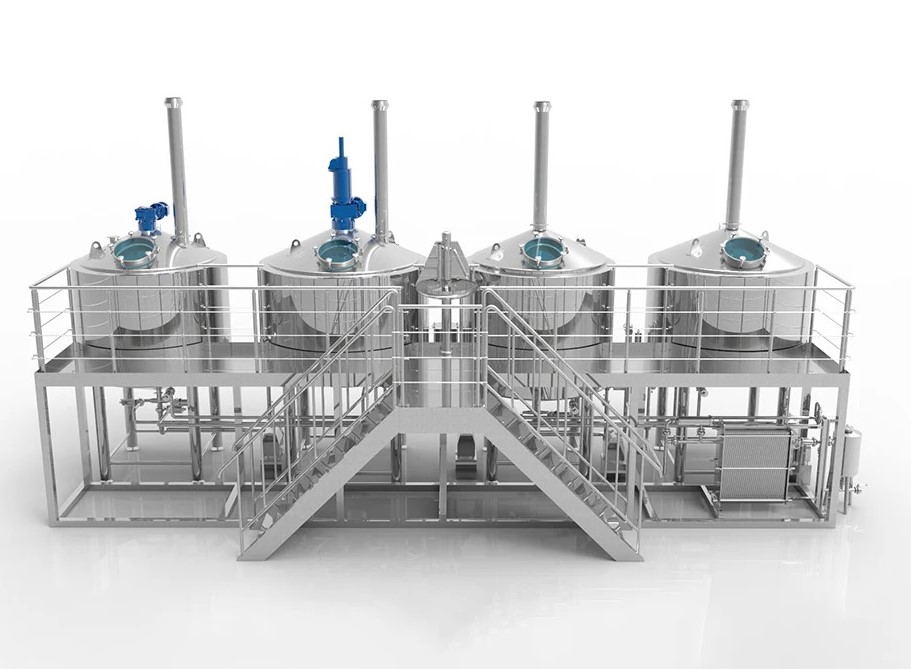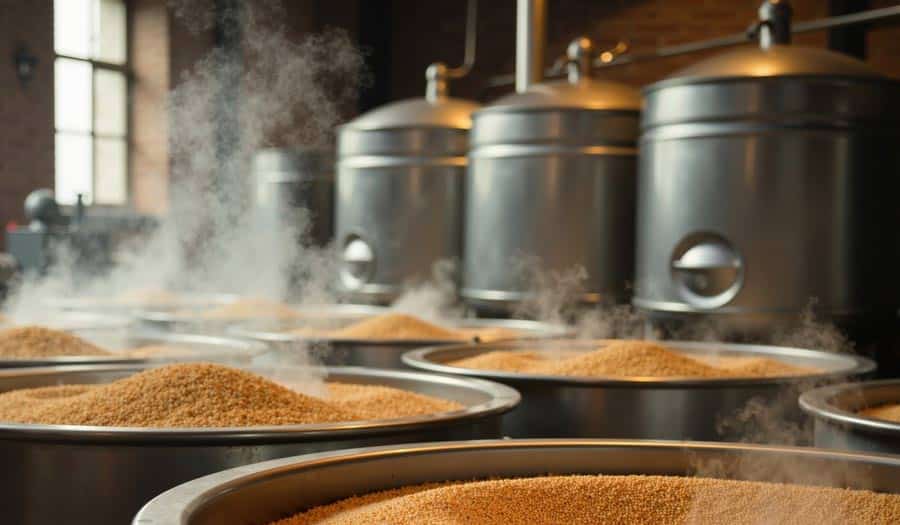In recent years, the craft beer industry has flourished, and more and more craft breweries have chosen to use conical fermentation tanks in the pursuit of higher quality and more efficient production. This fermentation equipment has many advantages over traditional cylindrical or open fermentation tanks, such as improving fermentation efficiency, reducing contamination risks, optimizing yeast management, and improving beer quality. Therefore, conical fermentation tanks have become the standard configuration of the craft industry.
What is a conical fermentation tank?
A conical fermentation tank is a fermentation vessel with a cylindrical upper part and a conical bottom, usually made of food-grade stainless steel (such as 304 or 316 stainless steel). Its main features are:
- The top is sealed, pressurized fermentation can be carried out, and the risk of oxidation can be reduced.
- The bottom is a conical structure (usually 60° angle), which is conducive to the natural sedimentation of sediment and yeast.
- Equipped with a bottom drain valve and a sampling port, it is convenient to discharge sediment, recover yeast, and sample for testing.
- A temperature control system (such as a cooling jacket) can be integrated to ensure a stable fermentation temperature.
- Compared to traditional open or plastic fermenters, the structural design of the conical fermenter makes it more suitable for commercial brewing and high-quality craft beer production.
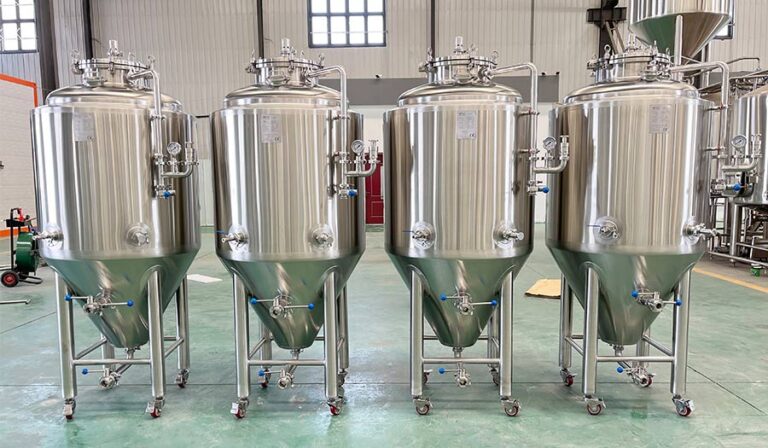
The core advantages of conical fermentation tanks
Improve fermentation efficiency and shorten the production cycle
- Reduce external pollution, prevent wild yeast or bacteria from entering, and improve the success rate of fermentation.
- Maintain a carbon dioxide environment, improve yeast activity, and accelerate the fermentation process.
- Optimize temperature management, avoid fermentation problems caused by temperature fluctuations, and improve yeast efficiency.
- In commercial craft beer production, improving fermentation efficiency means shorter production cycles, higher production capacity, and ultimately greater economic benefits.
Convenient yeast management and increased reuse rate
Craft breweries often need to reuse yeast to reduce production costs and maintain brewing consistency. The bottom structure of the conical fermenter makes yeast management more efficient:
- Natural concentration of yeast sedimentation: After fermentation, the yeast will automatically settle to the conical part of the bottom of the tank.
- Convenient layered recovery: The brewery can discharge the aged yeast in order and collect the healthy part through the bottom drain valve.
- Improve yeast vitality: Reduce the time that yeast is exposed to adverse environments (such as high alcohol content and oxidation) and increase the reuse rate of yeast.
Compared with traditional fermentation tanks, conical fermentation tanks can increase the yeast recovery rate by 30%-50%, greatly reduce production costs, and ensure the consistency of the taste of each batch of beer.
Reduce oxidation risk and improve beer quality.
Oxidation is one of the biggest factors affecting the flavor of beer. Excessive oxygen can cause the beer to have a cardboard taste, sourness, and deterioration of taste. The closed design and low oxygen exposure environment of the conical fermenter effectively reduce the risk of oxidation:
- Cooling and carbonation are carried out directly in the tank after fermentation is completed, reducing the chance of contact with air during transfer.
- Pressure fermentation can be performed, and carbonation is carried out using naturally produced carbon dioxide to prevent external oxygen from entering.
- Reduce disturbance when discharging sediment. Compared with traditional fermentation tanks that require dumping or siphon transfer, conical fermentation tanks can discharge sediment statically, further reducing the possibility of oxidation.
- By reducing oxidation, beer tastes fresher, has a purer flavor, and has a longer shelf life, which is essential for commercial sales.
Easy to clean and maintain, improve production safety
Cleaning the fermentation tank is one of the most important links in the brewing process. Any residual impurities or bacteria will affect the quality of the next batch of beer. The design of the conical fermentation tank makes it more efficient and safer to clean:
- CIP (cleaning in place) system: Commercial-grade conical fermentation tanks usually support CIP cleaning, reduce manual operations, and improve cleaning efficiency.
- Smooth stainless steel surface: Stainless steel material is not easy to absorb odors and bacteria, and cleaning is more thorough.
- Bottom drain port: Yeast and sediment can be discharged directly, reducing the workload of cleaning.

Conical Fermenters vs. Traditional Fermenters: Which is Better for Commercial Brewing?
|
Feature |
Traditional Fermenter |
Conical Fermenter |
|
Oxidation Risk |
High |
Low |
|
Fermentation Efficiency |
Lower |
Higher |
|
Yeast Harvesting |
Requires additional equipment |
Direct collection, more efficient |
|
Temperature Control |
Relies on external refrigeration |
Built-in cooling jacket, more stable temperature |
|
Cleaning & Maintenance |
Time-consuming, difficult to clean |
Easy to clean, supports CIP (Clean-in-Place) |
|
Suitability for Commercial Use |
Suitable for homebrewing or small-scale production |
Ideal for commercial craft brewing |
Tips for Effective Use of Conical Fermentation Tanks
- Cleaning and disinfection: Thoroughly clean and disinfect before and after use to avoid contamination that affects fermentation. Commercial-grade equipment can use a CIP (cleaning in place) system, while home brewers can clean manually with alkaline cleaners and disinfectants.
- Temperature control: Use the fermentation tank’s cooling jacket or temperature control device to maintain a stable fermentation temperature to ensure the yeast works optimally and avoid temperature fluctuations that affect the flavor of the beer.
- Pressure management: Properly adjust the pressure in the tank to perform spending, use naturally produced carbon dioxide for carbonation, reduce oxidation risks, and improve the taste.
- Yeast management: The conical bottom can collect yeast, regularly discharge sediment, and recycle healthy yeast for reuse, which improves yeast vitality and reduces brewing costs.
- Sampling and testing: Use sampling valves regularly to check the progress of fermentation, such as measuring specific gravity, pH value, etc., to ensure that fermentation is going smoothly and adjust parameters in time.
- Avoid oxidation: After fermentation is completed, minimize contact with air. Use carbon dioxide to flush the fermentation tank, or cool and carbonate directly in the tank to keep the beer fresh.
- Regular maintenance: Check key components such as sealing rings, valves, temperature control devices, etc. to ensure the normal operation of the equipment and avoid leakage or contamination problems.
How to use a conical fermenter?
- Proper use of a conical fermenter can improve fermentation efficiency, reduce the risk of contamination, and optimize yeast management. Here are the basic steps:
- Cleaning and disinfection: Before use, thoroughly clean and disinfect the fermenter and all parts that come into contact with beer to avoid contamination. You can use a CIP system (cleaning in place) or manual cleaning.
- Filling wort: Transfer the boiled and cooled wort to the fermenter to avoid excessive oxygen entry to maintain the flavor of the beer.
- Adding yeast: Select the appropriate yeast according to brewing needs and add it evenly to the wort.
- Temperature control: Set the appropriate fermentation temperature and use a cooling jacket or thermostat to maintain a stable environment to ensure that the yeast works properly.
- Monitor the fermentation process: Use a sampling valve to measure the specific gravity regularly, observe whether the fermentation is going smoothly, and check the release of foam and carbon dioxide.
- Discharge sediment and yeast: During fermentation, yeast and sediment will accumulate at the bottom of the tank. Discharge the precipitated yeast regularly to improve the clarity of the beer, and at the same time, you can recover healthy yeast for next use.
- Pressure fermentation (optional): If necessary, the pressure in the tank can be controlled for natural carbonation (Spunding), reducing oxidation and enhancing flavor.
- Transfer and packaging: After fermentation is completed, it can be cooled and carbonated directly in the tank, or transferred to packaging tanks, barrels, or bottling systems to minimize oxygen contact to maintain freshness.
- Cleaning and maintenance: Use special cleaning agents to thoroughly clean the fermentation tank, and check the seals, valves, and temperature control system to ensure long-term stable operation of the equipment.
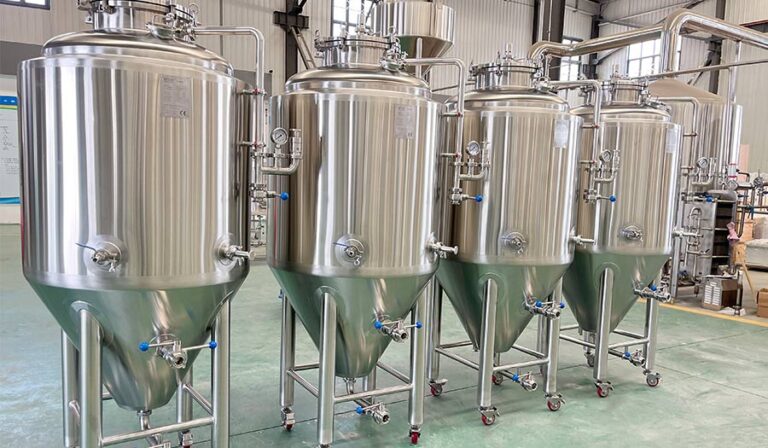
FAQ
A conical fermenter is a stainless steel container with a cylindrical upper part and a conical bottom, which is used for beer fermentation. It allows yeast and sediment to settle naturally to the bottom of the tank, which is convenient for discharge and recovery, improving fermentation efficiency and beer quality.
Why do craft breweries prefer conical fermenters?
- The yeast settles automatically, improving recyclability, reducing waste, and reducing costs.
- It is easier to control the fermentation temperature, provide a stable environment, and improve yeast vitality.
- Reduce the risk of oxidation, and maintain the freshness and taste of beer.
- Easy to clean and maintain, meet food safety standards, and improve production efficiency.
- Supports pressurized fermentation, can be naturally carbonated, and enhances the flavor.
How does a conical fermenter optimize yeast management?
After fermentation, the yeast will settle to the bottom of the cone. The bottom discharge valve can easily discharge dead yeast and recover healthy yeast for reuse. This not only reduces costs but also improves the consistency and quality of the next batch of beer.
Does a conical fermenter affect the flavor of beer?
Yes, but the impact is positive. Conical fermenters produce cleaner, purer-flavored beer due to less oxygen exposure inside the tank and better temperature control and cleanliness.
Is a conical fermenter worth investing in?
For commercial craft breweries, conical fermenters are a must-have because they can significantly improve production efficiency and beer quality. For home brewers, if the budget allows, investing in a small conical fermenter can also greatly improve the brewing experience and the flavor of the final product.

